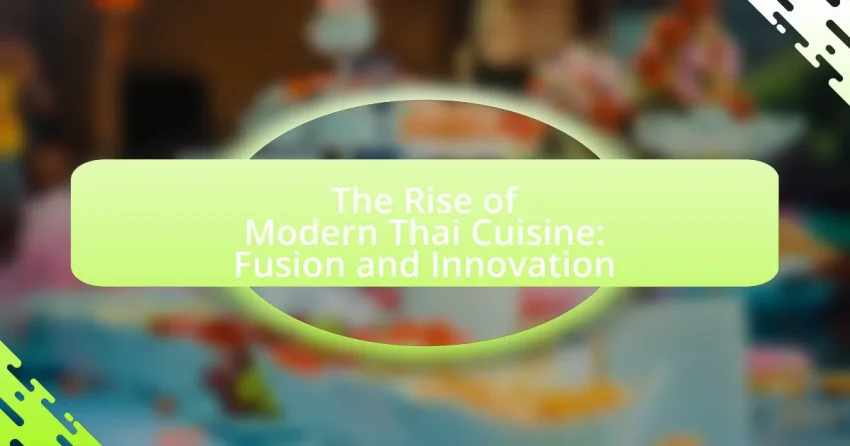Modern Thai cuisine represents a contemporary evolution of traditional Thai food, characterized by the integration of global culinary influences and innovative techniques. This transformation, which began in the late 20th century, emphasizes the balance of flavors—sweet, sour, salty, and spicy—while incorporating local, organic ingredients to promote sustainability. Key aspects include the fusion of traditional Thai…
Cooking Techniques Unique to Thai Cuisine
The article focuses on the unique cooking techniques that define Thai cuisine, including stir-frying, steaming, and grilling. It explores how these methods contribute to the distinct flavors and textures of Thai dishes, emphasizing the importance of fresh ingredients and the balance of flavors. Additionally, the article examines the cultural significance of these techniques, regional variations…
The Importance of Rice in Thai Meals
Rice is a fundamental staple in Thai meals, serving as the primary source of carbohydrates and playing a significant role in the country’s cultural practices and traditions. The article explores the various types of rice used in Thai cuisine, such as jasmine and sticky rice, and their preparation methods, highlighting how rice complements a wide…
Thai Food for Beginners: Essential Ingredients and Tools
Thai food is characterized by a balance of flavors, including sweet, sour, salty, and spicy elements, with essential ingredients such as rice, fish sauce, lime, chili, and coconut milk. Key components of Thai cuisine include aromatic herbs and proteins sourced from meats, seafood, and legumes, which contribute to the overall flavor and nutritional value of…
Thai Desserts: A Sweet Journey Through Traditional Treats
Thai desserts are a diverse array of sweet dishes that embody Thailand’s rich culinary heritage, utilizing ingredients such as coconut milk, rice flour, and tropical fruits. This article explores the cultural significance of these desserts, their historical origins, and the regional variations that influence their preparation. Key ingredients and popular types, including mango sticky rice…
Celebrating Thai Festivals Through Food
The article focuses on the celebration of Thai festivals through food, highlighting key events such as Songkran, Loy Krathong, and Yi Peng. It explores the cultural significance of traditional dishes, communal cooking practices, and the role of food in fostering community bonds during these festivals. The article also discusses the health and sustainability aspects of…
Pairing Thai Food with the Perfect Beverage: A Sommelier’s Guide
The article focuses on the significance of pairing beverages with Thai food, emphasizing how the complex flavor profiles of Thai cuisine—characterized by sweet, sour, salty, and spicy elements—can be enhanced through thoughtful beverage choices. It discusses the influence of these flavors on beverage selection, highlighting suitable options such as aromatic white wines, light lagers, and…
Cultural Significance of Thai Herbs and Spices in Restaurant Dishes
The article explores the cultural significance of Thai herbs and spices in restaurant dishes, highlighting their role in embodying Thailand’s rich culinary traditions and regional diversity. Key ingredients such as lemongrass, galangal, and Thai basil are essential for creating the distinct flavors that define Thai cuisine, reflecting historical influences and the philosophy of balance in…
Exploring Thai Seafood Dishes: From Coastal to Urban
The article focuses on the diverse landscape of Thai seafood dishes, highlighting their key characteristics, regional influences, and cultural significance. It explores the bold flavors and fresh ingredients that define these dishes, such as shrimp, fish, and squid, enhanced by local herbs and spices. The article also distinguishes between coastal and urban seafood cuisine, detailing…
Vegan and Vegetarian Options in Thai Cuisine
Vegan and vegetarian options in Thai cuisine are diverse and flavorful, featuring dishes such as Pad Thai with tofu, green curry with vegetables, and Tom Yum soup without shrimp. These meals often incorporate ingredients like coconut milk, fresh herbs, and a variety of vegetables, aligning with Thailand’s culinary traditions and Buddhist practices that promote compassion…








